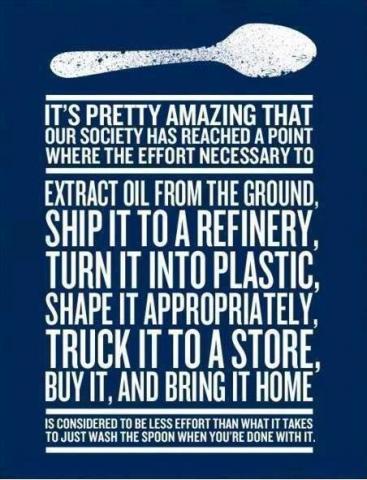
David Holmgren’s Summary
This principle brings together traditional values of frugality and care for material goods, the modern concern about pollution, and the “more radical” perspective that sees wastes as resources and opportunities. The earthworm is a suitable icon for this principle because it lives by consuming plant litter (wastes), which it converts into humus that improves the soil environment for itself, for soil micro-organisms, and for the plants. Thus the earthworm, like all living things, is a part of a web where the outputs of one are the inputs for another.
The industrial processes that support modern life can be characterized by an input-output model, in which the inputs are natural materials and energy, while the outputs are useful things and services. However, when we step back from this process and take a long-term view, we can see all these useful things end up as wastes (mostly in rubbish tips) and that even the most ethereal of services required the degradation of energy and resources to wastes. This model might therefore be better characterized as "consume/excrete". The view of people as simply consumers and excreters might be biological, but it is not ecological.
Commentary by Tim Sonder, Edible Evanston Education Chair
Let’s start by turning this this principle around: There is no such thing as “waste,” there are only resources—matter and energy (or energy bound up in matter) to be recycled. I think Einstein would not consider this radical at all. Nor would many of our ancestors.
Our discussion today on soil life emphasizes this principle. All the biology in the soil is there to extract needed resources from what some people might view as waste. Hence the earthworm is apt as this principle’s symbol, for it begins the process of breaking down substances and transmuting them by grinding them up in the presence of bacteria.
Our society has turned into one based on consumption and the expectation that we need more, more, more and that things wear out. We hear messages like “Be fashionable,” “You don’t want to look poor,” “Can’t you afford something new?” Once upon a time everything was seen as a resource and craftmanship, being handy and “frugality” were admired traits. We need to return to that.
I prefer to look at an unneeded object as: It’s not waste, it’s a resource, so how can we find the highest use for it? Capture the most value. This outlook changes the paradigm of how you view things.
1) Frequently that means reusing an object without changing it—repurpose it. Take a container and turn it into a plant pot, for example.
2) Change is good too. Make a quilt from fabric scraps.
3) Compost is wonderful, but perhaps organic matter can provide something first and then be composted:
- Take your vegetable scraps and make soup stock from them. Then compost what’s left. (Frankly, I often just eat it, but that’s me.) Don’t need soup stock right now? Freeze them for later.
- Coffee grounds are wonderful for the compost and for the garden, but did you know you can grow oyster mushrooms on them? Do that first, compost them later.
- Learn how to avoid food waste: don’t over-consume, repackage what you buy to provide ideal storage conditions; cook and refrigerate or freeze something before the raw ingredients go bad; Do meal planning by triage—what’s in your fridge that needs to be used first?Chefs are rising to the challenge and making gourmet meals out of food scraps. Share over abundance, including using the Edible Evanston Produce Share
- And finally, composting food scraps is great for the earth and for your garden, so be sure you do it!
4) Graywater… that’s slightly dirty water. Permaculture suggest using plants to filter it (often catching not just “bad stuff” but plant nutrients).
5) Energy… heating the oven? How else can you use that heat—either by cooking something else or after you are done, taking advantage of the slowly cooling oven to make yogurt or …?
6) Objects you no longer want but may still be useful: Try hard to figure out how to redistribute them.
Get creative. What can be done with “byproducts.” Net shells, sawdust, whey, packaging…
Besides looking at waste as a resource another thing about “Produce No Waste” deserving consideration is to question the original consumption. Do you need that thing? Do you need it now?Certainly avoid “disposables”—plastic silverware, plastic bags, and the like. This is critical in our efforts to fight climate change.
